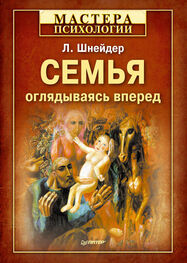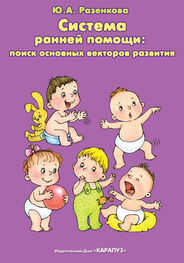Klein, C. (1977). Coping patterns of parents of deaf-blind children. American Annals of the Deaf, 122, 310-312.
Klein, S. D. (1972). Brother to sister: Sister to brother. Exceptional Parent, 2, 10-15.
Klein, S. D. (1994). The challenge of communication with parents. In R. B. Darling & M. I. Peter (Eds.), Families, physicians, and children with special health needs: Collaborative medical education models (pp. 51-74). Westport, CT: Greenwood.
Kleinman, A., Eisenberg, L.,& Good, В. (1978). Culture, illness and care: Clinical lessons from anthropologic and cross-cultural research. Annals of Internal Medicine, 88, 251-258.
Kline, E, Acosta, E X., Austin, W., & Johnson, R. G., Jr. (1980). The misunderstood Spanish-speaking patient. American Journal of Psychiatry, 737 (12), 1530-1533.
Kohn, M. L. (1969). Class and conformity: A study in values. Homewood, IL: Dorsey.
Konstam, V, Drainoni, M., Mitchell, G., Houser, R., Reddington, D., & Eaton, D. (1993). Career choices and values of siblings with individuals with developmental disabilities. School Counselor, 40, 287-292.
Korn, S. J., Chess, S., & Fernandez, P. (1978). The impact of children's physical handicaps on marital quality and family interaction. In R. M. Lerner & G. B. Spanier (Eds.), Child influences on marital and family interaction: A life-span perspective (pp. 299-326). New York: Academic Press.
Krahn, G. L. (1993). Conceptualizing social support in families of children with special health needs. Family Process, 32, 235-248.
Krauss, M. W., & Giele, J. Z. (1987). Services to families during three stages of a handicapped person's life. In M. Ferrari & M. B. Sussman (Eds.), Childhood disability and family systems (pp. 213-229). New York: Haworth.
Krauss, M. W., & Seltzer, M. M. (1993). Coping strategies among older mothers of adults with retardation: A life-span developmental perspective. In A. P. Turnbull, J. M. Patterson, S. K. Behr, D. L. Murphy, J. G. Marquis, & M. J. Blue-Banning (Eds.), Cognitive coping, families, and disability (pp. 173-182). Baltimore: Brookes.
Kubler-Ross, E. (1969). On death and dying. New York: Macmillan.
Kunitz, S. J., & Levy, J. E. (1981). Navajos. In A. Harwood (Ed.), Ethnicity and medical care (pp. 337-396). Cambridge, MA: Harvard University Press.
Kurtz, R. A. (1977). Advocacy for the mentally retarded: The development of a new social role. In M. J. Begab & S. A. Richardson (Eds.), The mentally retarded and society: A social science perspective (pp. 377-394). Baltimore: University Park Press.
Kurtz, R. A. (1975). Social aspects of mental retardation. Lexington, MA: Heath.
Laborde, P. R., & Seligman, M. (1991). Counseling parents with children with disabilities. In M. Seligman (Ed.), The family with a handicapped child (2nd ed., pp. 337-369). Boston: Allyn & Bacon.
Lamb, M. E. (1983). Fathers of exceptional children. In M. Seligman (Ed.), The family with a handicapped child: Understanding and treatment (pp. 125-146). Orlando, FL: Grune & Stratton.
Lamb, M. E., & Meyer, D. J. (1991). Fathers of children with special needs. In M. Seligman (Ed.), The family with a handicapped child [2nd ed., pp. 151-179). Boston: Allyn & Bacon.
Landers, A. (1986, October). Ann Landers advice column.
Laosa, L. M. (1974). Child care and the culturally different child. Child Care Quarterly, 3, 214-224.
Laosa, L. M. (1978). Maternal teaching strategies in Chicano families of varied socioeconomic levels. Child Development, 49, 1129-1135.
LaRossa, R. (1977). Conflict and power in marriage: Expecting the first child. Beverly Hills: Sage.
Laureys, K. (1984). Growing up with Brian. Sibling Information Network Newsletter, 3, 5-6.
Lazerson, M. (1975). Educational institutions and mental subnormality: Notes on writing a history. In M. J. Begab & S. A. Richardson (Eds.), The mentally retarded and society: A social science perspective (pp. 33-52). Baltimore: University Park Press.
Lechtenberg, R. (1984). Epilepsy and the family. Cambridge, MA: Harvard University Press.
Lee, E. (1982). A social systems approach to assessment and treatment for Chinese American families. In M. McGoldrick, J. K. Pearce, & J. Giordano (Eds.), Ethnicity and family therapy (pp. 527-551). New York: Guilford Press.
Leifield, L., & Murray, T. (1995). Advocating for Aric: Strategies for full inclusion. In В. B. Swadener & S. Lubeck (Eds.), Children and families «at promise»: Deconstructing the discourse of risk (pp. 238-261). Albany: State University of New York Press.
LeMasters, E. E. (1957). Parenthood as crisis. Marriage and Family Living, 19, 352-355.
LePontois, J., Moel, D. I., & Cohn, R. A. (1987). Family adjustment to pediatric ambulatory dialysis. American Journal of Orthopsychiatry, 57, 78-83.
Levine, E. S. (1960). Psychology of deafness. New York: Columbia University Press.
Lewis, J., & Greenstein, R. M. (1994). A first-year medical student curriculum about family views of chronic and disabling conditions. In R. B. Darling & M. I. Peter (Eds.), Families, physicians, and children with special health needs: Collaborative medical education models (pp. 77-100). Westport, CT: Green wood.
Lewis, 0. (1959). Five families: Anintimate and objective revelation of family life in Mexico to day – A dramatic study of the culture of poverty. New York: Basic Books.
Lieberman, A. F (1990). Infant-parent intervention with recent immigrants: Reflections on a study with Latino families. Zero to Three, W., 8-11.
Lipscomb, J., Kolimaga, J. Т., Sperduto, P. W., Minnich, J. K., & Fontenot, K. J. (1983). Cost-benefit and cost-effectiveness analyses of screening for neural tube defects in North Carolina. Unpublished manuscript, Duke University, Institute for Policy Sciences, Durham, NG.
Lobato, D. (1983). Siblings of handicapped children: A review. Journal of Autism and Developmental Disorders, 13, 347-364.
Lobato, D. J. (1990) Brothers and sisters with special needs. Baltimore: Brookes.
Locust, G. (1988, June). Integration of American Indian and scientific concepts of disability: Cross-cultural perspectives. Paper presented at the meeting of the Society for Disability Studies, Washington, DC.
Lorber, J. (1971). Results of treatment of myelomeningocele. Developmental Medicine and Child Neurology, 13, 279-303.
Lurie, E. (1970). How to change the schools: A parent's action handbook on how to fight the system. New York: Vintage.
Luterman, D. (1984). Counseling the communicatively disordered and their families. Boston: Little, Brown.
Luterman, D. J. (1979). Counseling parents of hearing-impaired children. Boston:
Little, Brown. Lynch, E. W. (1992). Developing cross-cultural competence. In E. W. Lynch & M. J. Hanson (Eds.), Developing cross-cultural competence: A guide for working with young children and their families (pp. 33-59). Baltimore: Brookes.
Lynch, E. W., & Hanson, M. J. (1992). Developing cross-cultural competence: A guide for working with young children and their families. Baltimore: Brookes.
Lyon, S., & Lyon, G. (1991). Collaboration with families of persons with severe disabilities. In M. Seligman (Ed.), The family with a handicapped child (2nd ed., pp. 237-264). Boston: Allyn & Bacon.
Lyon, S., & Preis, A. (1983). Working with families of severely handicapped persons. In M. Seligman, (Ed.) The family with a handicapped child: Under standing and treatment (pp. 203-232). Orlando, FL: Grune & Stratton.
Читать дальше



